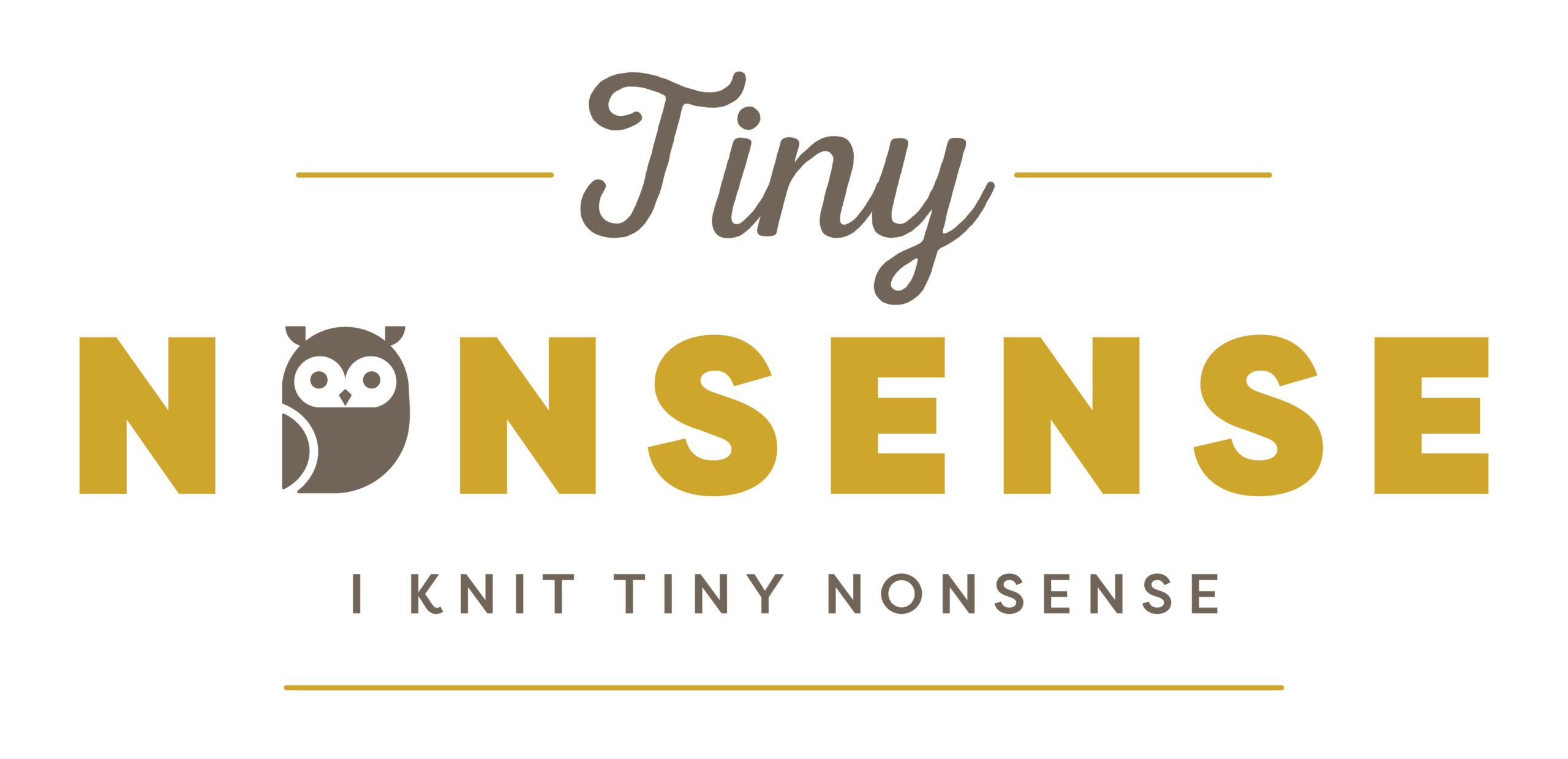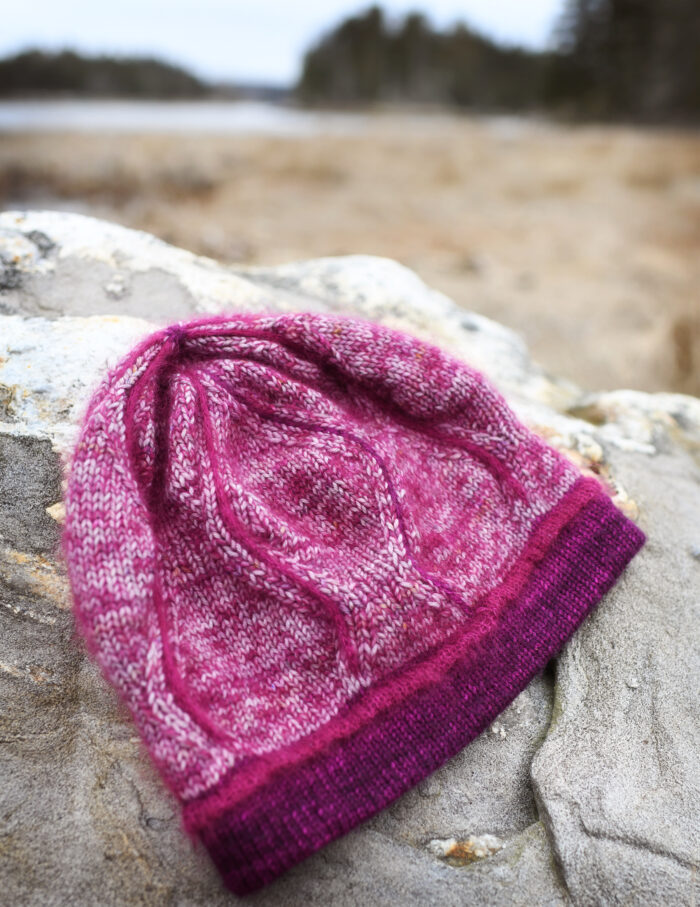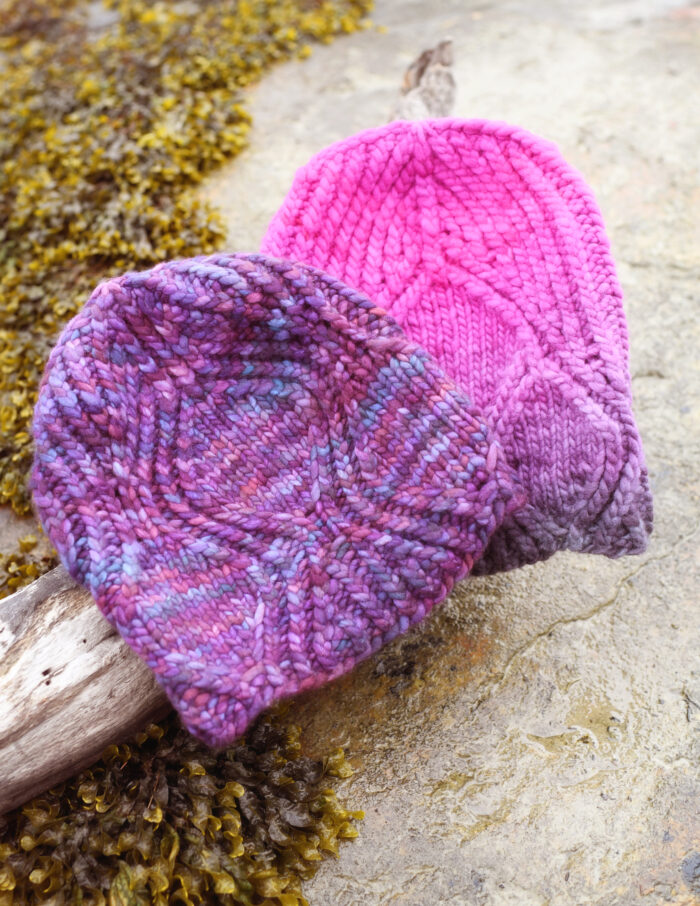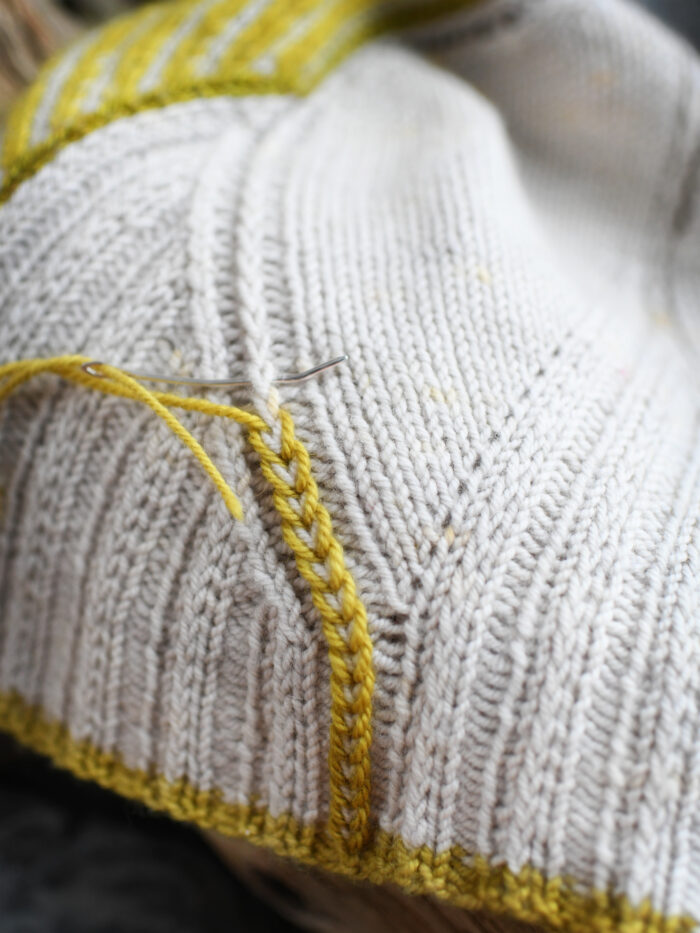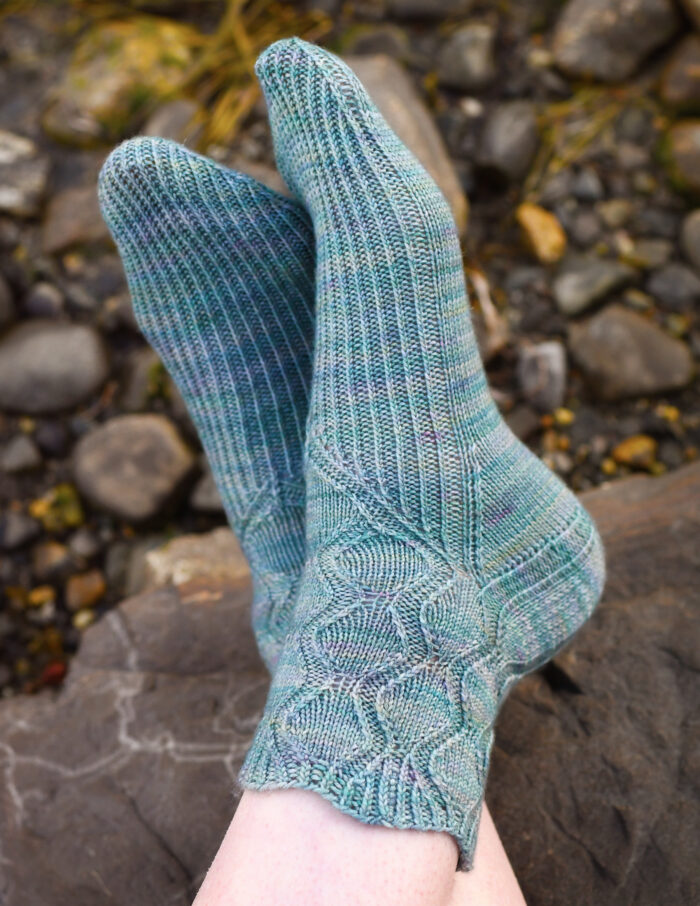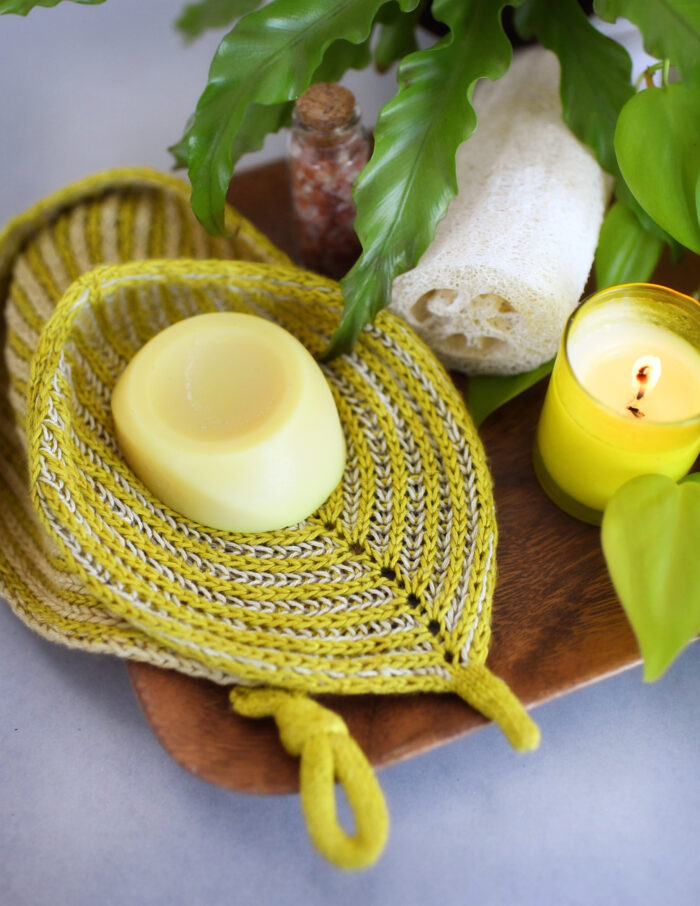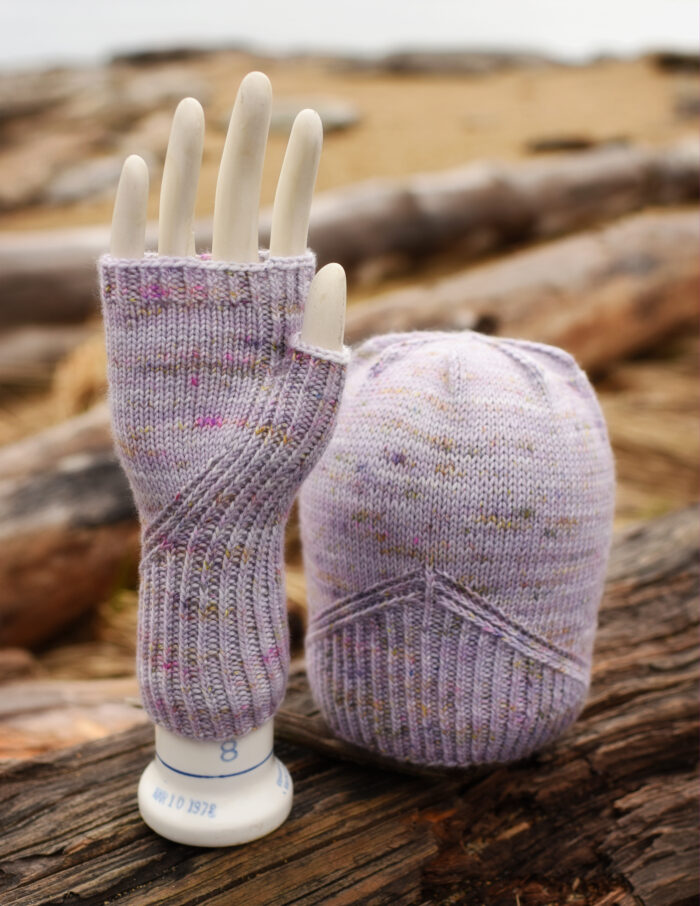Summer School, Thick and Cozy
You are the boss of your socks. And if you want thick and cozy socks, you can have them (even if the sock pattern you’re working with is intended for more traditional socks). Because you are the boss of your socks, and you get what you want. All you have to do is pick the right yarn and work the right gauge. Let’s break it down.
Yarn
If you’re going to knit thick socks you’re going to need thick yarn. Seems simple enough, right? But you still need your thick sock yarn it to do all the things you’d want a fingering weight sock yarn to do.
You can’t just grab any heavier yarn and go to town. Some of them are way too delicate or too insubstantial to make good socks. You want to pay attention to the fiber content, the structure, and the density of the yarn, just like you would with fingering weight sock yarn.
Fiber Content
When I’m looking for a sock yarn (thick or thin), I like to aim for mostly animal fibers, with about 10-25% of something else to make them more durable.
That animal fiber part is almost always wool (though a little bit of cashmere or alpaca can be lovely too). If you’re really concerned about having long lasting socks, pay a bit of extra attention to the kind of wool you pick. Merino is by far the most common. It’s lovely and soft but not terribly sturdy. Socks benefit from sturdy. If you’re up for a bit of a scavenger hunt, consider looking for other wools (blue faced leicester is a good place to start your ‘not merino’ explorations, but there are lots of choices). Don’t worry, merino isn’t bad, just if you go with merino, you probably want to make sure there’s something else going on to help it hold up.
That something to make them strong part is usually nylon (you might also see polyamide on the label too, for the purposes of this discussion treat them like the same thing). But it can also be silk. Silk is surprisingly strong and it does a lot of the same things nylon would do in a sock yarn (and it has a lovely luster too).
Structure
Single ply yarns are lovely. I adore them. I am helpless to resist them. They are awful for socks. For socks (again, thick or thin) you want a plied yarn. The more plies the better (I have socks from 8 or 12 ply yarns and they wear like iron). And the more tightly twisted together those plies are the better.
My theory is that the more plies there are, and the more tightly twisted together they are, the less room things have to wiggle around against each other and wear down. I’m not clever enough to be able to prove it, but a toss of my sock basket strongly supports the idea.
Density
The last thing to consider is how dense a yarn is. The denser a yarn is, the more stuff there is in a given length of yarn, and the longer that yarn is going to last. The way to check this is to look for yarn that’s heavy for its length. So if you have two skeins, both the same length and made from the same materials, and one weighs 100 grams and the other weighs 120 grams, go with the heavier one.
Examples
This is by no means an exhaustive list, just a few examples to walk through a few yarns that I know I like and a few yarns that look promising.
-
- Seven Sisters Arts’ Zodiac is the absolutely classic merino/cashmere/nylon blend that is so popular for socks blown up to worsted weight. I love it. If you know you like this blend for skinny socks and just want to scale things up, this is a super easy way to do it. If you like this blend, Indigodragonfly’s MerGoat Worsted or Hand Maiden’s Casbah Plush or Skeinny Dipping’s Squoosh Aran are all great and work the same way.
- Dream in Color’s Everlasting DK, now sadly discontinued, has 12 teeny tiny little tightly twisted plies. It’s 100% merino, but the structure made it tremendously strong (and if you ever find a similar yarn, grab it, then totally tell me about it). Knit it up tight and it is basically indestructible. The closest thing I’ve found that’s currently available is Wollmeise’s Merino DK. It doesn’t have quite as many plies (8 instead of 12), but the structure looks similar. Or, if you’re looking for a skinny version of yarn like this, Spacecadet’s Oriana 8-ply is the fingering weight version of this (and is a delight to work with and lasts forever).
- Eden Cottage Yarns’ Bowland DK and Bowland Aran are both 100% blue faced leicester and either is a great place to start your ‘maybe something besides merino’ experimentation. As are Fleece Artist’s Blue Face Leicester Aran or West Yorkshire Spinners’ Fleece Bluefaced Leicester DK. Just be aware that starting to experiment with other fibers is a slippery slope and you may find yourself on a treasure hunt.
Gauge
You still need to work at a tight gauge, even if you’re making thick socks. Knitting too loosely dooms your socks (whether they’re thick or thin). I’m a firm believer that most fingering weight socks should be knit at about 8.5-9 stitches per inch in stockinette, most sport or dk weight socks should be knit at about 7.5-8 stitches per inch, and most worsted weight socks should be knit at about 6.5-7 stitches per inch. This feels tight (and it is), but it means your socks will last for ages.
Most of my sock patterns come in a bunch of sizes and already include sizing information for working at several different gauges. That means you can make most any of them thick without having to do any extra math. All you have to do is follow the table at the start of the pattern and pick your size.
But if the pattern you want to use doesn’t do that, don’t despair. You can just do a (tiny) bit of math and make them thick anyway. One quick note, this will work for most sock patterns, but of course I can’t promise anything about another designer’s pattern (especially if the sock is put together in an unusual way). But the general principles should hold the vast majority of the time.
Mathy bits
To use a sock pattern written for a different gauge, all you need to do is figure out how many stitches you’ll need to get around your foot at the gauge your yarn needs. To do that, you need to measure your foot, measure your gauge, and do a little multiplication.
-
- First measure around the ball of your foot, just behind your toes. Then knit a gauge swatch in your chosen yarn and measure your gauge.
- Next, multiply your foot measurement by 0.9 to figure out how big your sock should be. Your sock generally needs to be a little bit smaller than your foot (about 10% negative ease is good for socks), and multiplying your foot size by 0.9 takes care of that for you.
- Finally, multiply the number you just got by your gauge.
Size of your foot x 0.9 x your gauge = how many stitches you need
Examples
I’ll walk through two, just to show you, but really you can do this.
-
- Let’s say your foot is 9 inches around and your gauge is 7 stitches per inch:
9 inches x 0.9 x 7 stitches per inch = 56.7 stitches. Partial stitches aren’t a thing, and knitting is forgiving, so call it 56 stitches. Your general goal is to knit your sock with about 56 stitches in each round.
-
- Let’s say your foot is 10 inches around and your gauge is 7.5 stitches per inch:
10 inches x 0.9 x 7.5 stitches per inch = 67.5 stitches. Again knitting is forgiving and we can’t have partial stitches, so round that to 68. Your general goal is to knit a sock with about 68 stitches in each round.
Pick a size
Now, look through the pattern’s sizes for one where you’re working about that many stitches on each round. It doesn’t have to be exact (knitting is stretchy), but that’s your goal. That size, worked at your gauge, should fit your foot.
This should work for most feet and most patterns. Of course the more sizes the sock comes in the better the chance it will work. But generally, you can use thicker yarn and a smaller stitch count size and you’ll be golden!
So that’s really all there is to it. Pick your thick sock yarn with the same care you’d use when picking thin sock yarn (little bit of nylon, lots of plies, nice tight twist). Knit a gauge swatch (remember, you’re aiming for a firm, tight fabric). Pick your size from the pattern (do that tiny bit of math if the pattern doesn’t include the gauge you want to work at). You’ll be delighting in your extra cozy toes in no time!
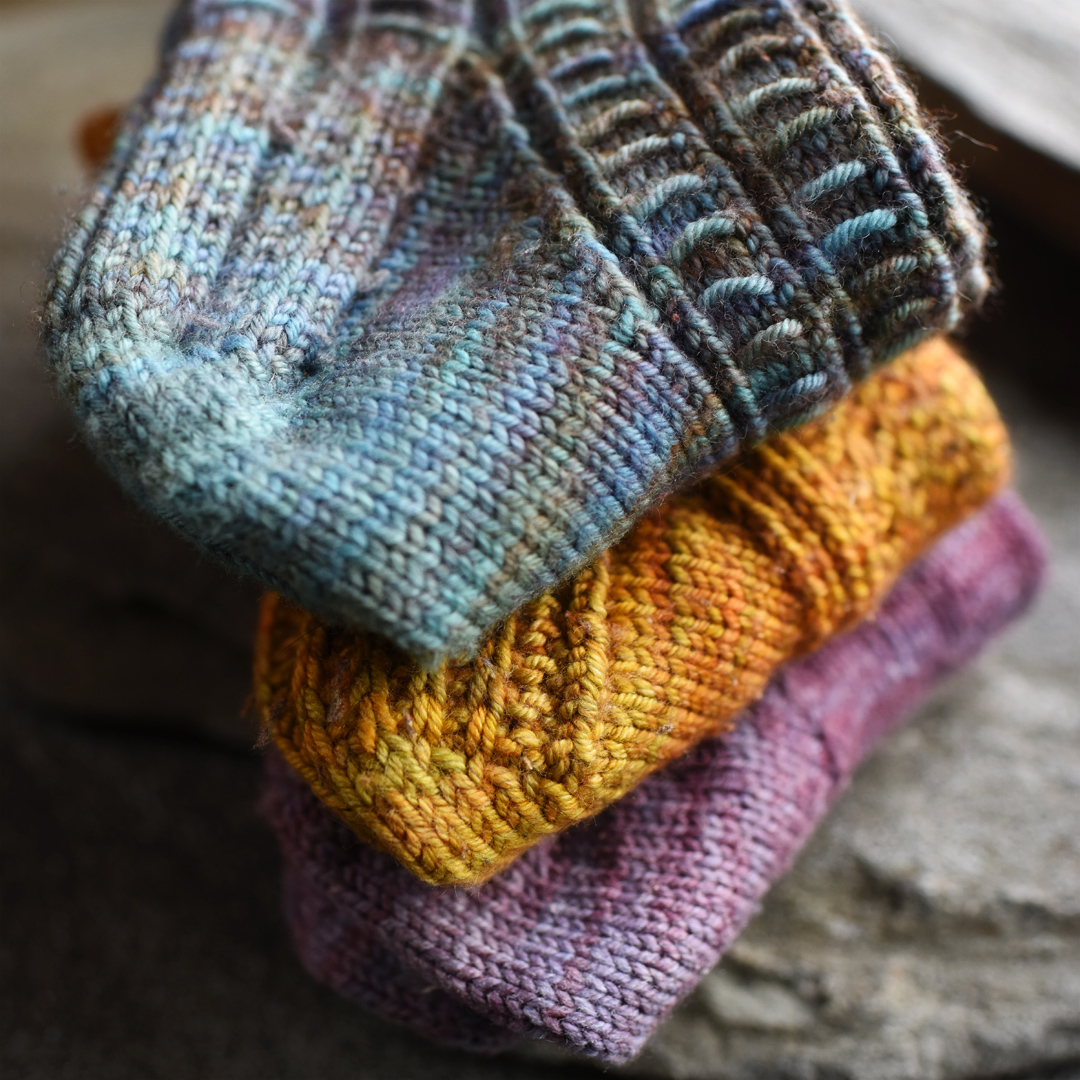
Psst, those thick socks are all at least five years old, some more like seven, and they’re all still going strong. A bit fuzzy on the heels sure, but with many more years of wear left in them. Knit tight, thick socks will last for ages.
Mailing List
Want to hear when a new pattern comes out or something fun is going on? Sign up below!
Patreon
Want to support the content I create, get nifty bonus material for some of my favorite patterns, or get every new release delivered right to your inbox? Head over to patreon and sign up!
